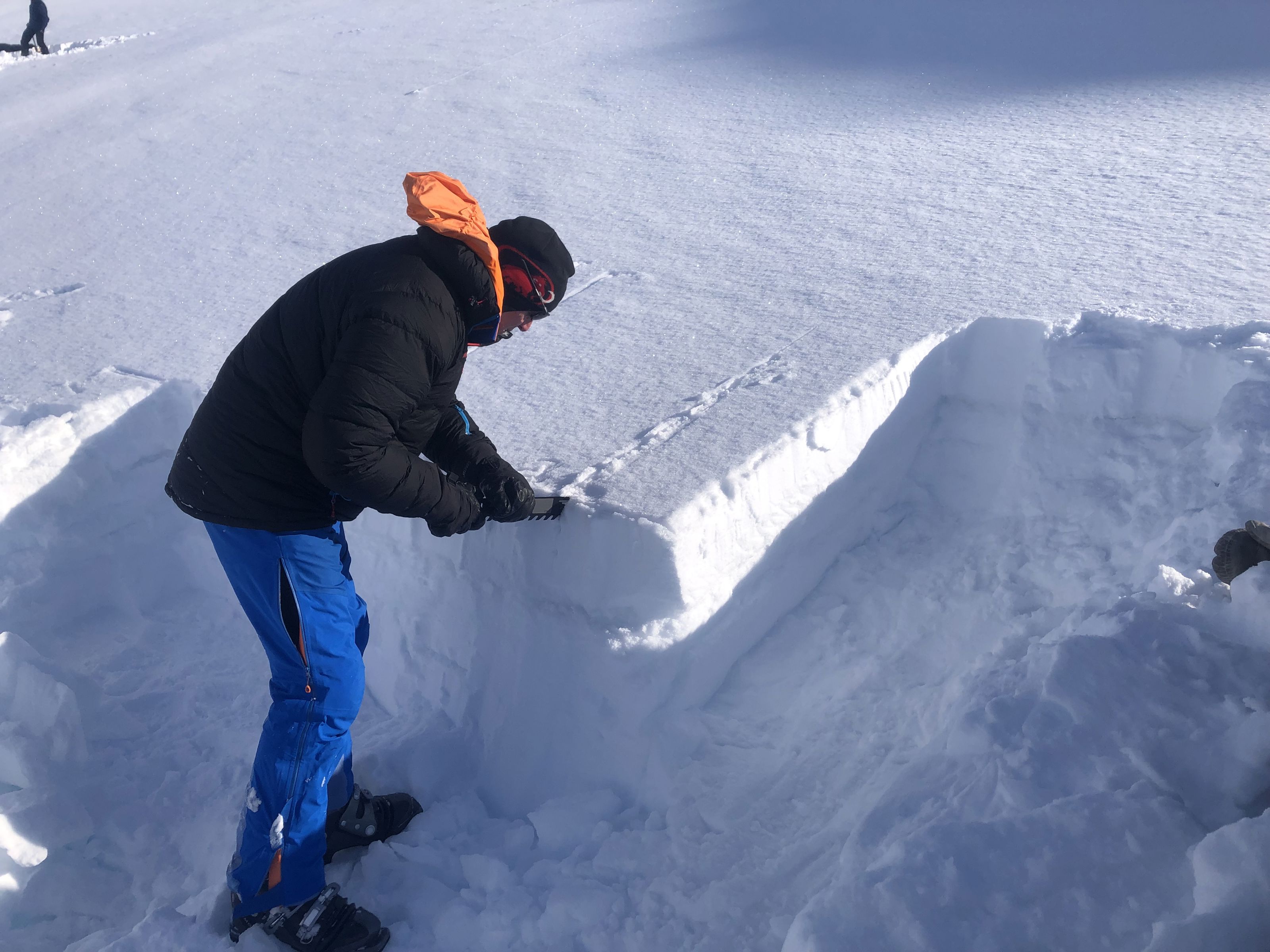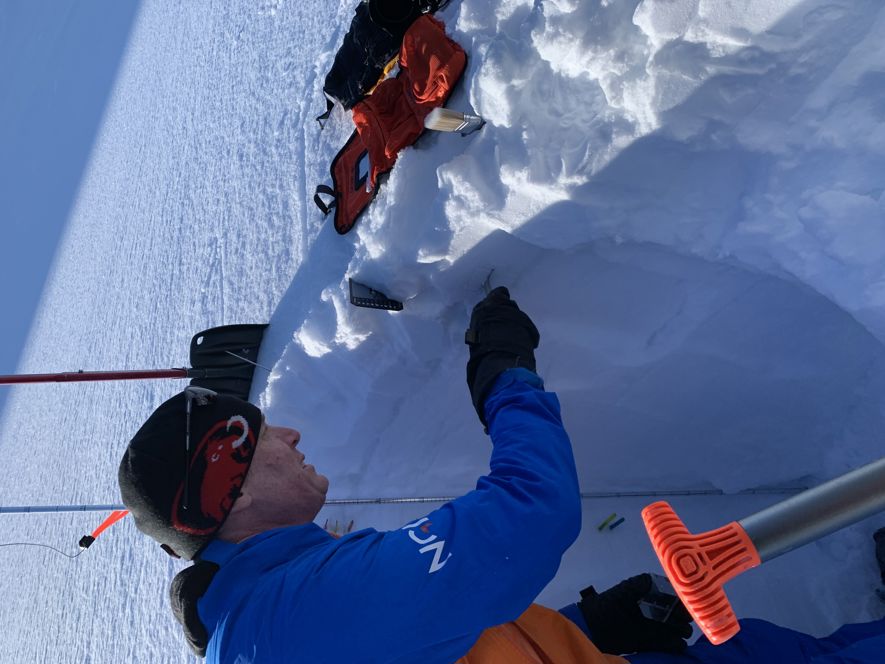Snow avalanche expert concerned about possible record year of fatalities due to avalanche accidents: “Do not move in avalanche-prone terrain when there is a high risk of avalanches”
So far this winter, four people have lost their lives in snow avalanche accidents. "If you ski in steep terrain, you have a significant responsibility to avoid getting caught in an avalanche," says NGI's snow avalanche expert, Christian Jaedicke.

NGI's snow avalanche expert, Christian Jaedicke, checks the stability of the snow layers. ( Credit: NGI)
NGI – the Norwegian Geotechnical Institute – has been keeping statistics and investigating many fatal snow avalanches in Norway since 1972. On behalf of local authorities or others responsible for safety, NGI assists during acute snow avalanche incidents.
"Including the four fatalities this winter, a total of 125 people has lost their lives in snow avalanches in Norway since 2002. 82 percent of the victims were outdoors when it happened," says Jaedicke. He believes that this season, with four fatalities already, could mean a record year if people do not take enough precautions when in the mountains.
Three things all skiers must consider
Jaedicke, with 20 years of research on snow avalanches at NGI, emphasizes the life-threatening nature if one is not vigilant. He highlights three things all skiers must consider when in avalanche-prone terrain:
- How steep is the terrain?
- What is the condition of the snowpack?
- What does the weather forecast and avalanche warning say?
Jaedicke explains that points 1 and 3 are the easiest to assess:
"If the terrain is steeper than 30 degrees, avalanches can occur. If you stay below a 30-degree slope, you are safe. It's a simple rule," says Jaedicke. He also urges people to respect the weather forecast and avalanche warnings, which can be easily accessed through platforms like Yr or Varsom.no, the national channel for natural hazard warnings.
Very challenging to assess the snowpack
Regarding point 2, evaluating the snowpack, Jaedicke believes it is much more challenging than monitoring slope steepness and warnings.
"The snow is layered, and the snow you see on top is just part of the situation. Understanding how the snow behaves under load is demanding, and unfortunately, many overestimate their knowledge. My recommendation is to pay attention to warnings and slope steepness, and not place too much emphasis on your own assessment of the snowpack. It may unfortunately mean having to skip the descent in lovely fresh powder, but no descent is worth the risk of being caught in an avalanche," says Jaedicke, who himself enjoys off-piste skiing in untouched nature.
Remember avalanche gear, but don't rely solely on equipment for safety!
Some skiers may feel secure because they have equipment that can help if an avalanche were to release. Jaedicke warns against thinking that you can either outrun the avalanche or that equipment most likely will guarantee survival when caught in an avalanche. One-third of those caught in avalanches have succumbed to injuries after the avalanche has stopped. The other two-thirds can be rescued by people in the group or in the area. However, there is only a 15–20-minute window to locate and then sufficiently dig out the buried person to clear their airways. For the latter group, avalanche gear such as a transceiver and possibly an airbag will undoubtedly increase the likelihood of a successful rescue.
NGI has its own research station and testing field where they trigger avalanches to learn more about the dynamics of a snow avalanche. There, they measured that an avalanche moves at an enormous speed of 50 meters per second.
"If you trigger an avalanche, the masses move so quickly that it only takes a moment before you are buried under large amounts of snow. The snow is so compact that you often have no chance to dig yourself out. The area where potential rescuers will search for you will be large; it's a bit like finding a needle in a haystack. It doesn't take long before you won't have enough oxygen to survive under the snow, even with all modern equipment," says Jaedicke.
He advises everyone to plan their trips well, check route choices and slope steepness. Also, think about alternative routes, and consider before leaving home whether the chosen route aligns with any avalanche warnings. When trekking in steep terrain in winter, you should always have an avalanche transceiver, probe, shovel, and other safety equipment like a helmet.
"I hope that everyone heading out for a trip this winter follows these recommendations. Then, we can avoid this winter becoming a record year for fatalities," concludes Jaedicke.
Fact Box
- NGI – the Norwegian Geotechnical Institute has been researching snow avalanches for 50 years at Fonnbu research station and Ryggfonn test field. Ryggfonn is one of two such test fields in the world – the other is in Switzerland.
- Here you can see the complete overview of avalanche fatalities since 2002.
- Varsom.no - snow avalanche warning

NGI's snow avalanche expert, Christian Jaedicke, checks the stability of the snow layers. ( Credit: NGI)
